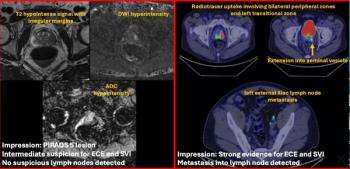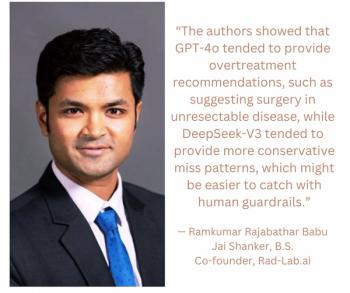
European PACS player Rogan sees U.S. ripe for HyperPACS
Falling hardware prices make market attractiveA familiar face in the European PACS market is trying its luckin the U.S. Rogan BV of Huis Ter Heide, the Netherlands, has begunmarketing its HyperPACS product in the U.S. after receiving Foodand
Falling hardware prices make market attractive
A familiar face in the European PACS market is trying its luckin the U.S. Rogan BV of Huis Ter Heide, the Netherlands, has begunmarketing its HyperPACS product in the U.S. after receiving Foodand Drug Administration clearance for the system earlier thisyear.
Rogan has been selling PACS products in Europe since 1987 andhas over 130 systems installed, primarily in Germany and the Netherlands,according to Mark Schwartz, vice president and general managerof Rogan Medical Systems, Rogan's U.S. subsidiary in Waukesha,WI. Despite its success in Europe, Rogan steered clear of theU.S. market until this year because of cost and technology issuesthat have kept the price of PACS high in the U.S.
For example, U.S. physicians prefer the use of 2k x 2k monitorsfor diagnostic purposes, while their European counterparts oftenuse less expensive 1k x 1k displays. In addition, most U.S. PACSinstallations use lossless data compression, while in Europe lossycompression is common. Falling hardware prices and the developmentof clinical guidelines for PACS are making the U.S. market moreattractive, however, according to Schwartz.
"The economics for PACS are becoming more viable for theU.S.," Schwartz said. "Part of that is the technologycoming down in price and some of that also are the guidelinesthat have been set, in terms of the (American College of Radiology)setting 2k x 2k as a guideline for clinical diagnostic stations."
HyperPACS is based on PC architecture and can run on eitherDOS or Windows platforms. The system is scalable, and Rogan'sEuropean sites range from teleradiology links to a totally filmlessinstallation at Charitas Hospital in Dillingen, Germany.
Rogan offers review workstations in 2k x 2k, 1k x 1k, and 640x 480 displays. HyperPACS relies on CD-ROM jukeboxes for archiving,which Rogan believes confers advantages due to its low cost andopen configuration. HyperPACS also supports the ACR-NEMA's DICOM3.0 standard.
"When hospitals archive, they tend to be tied to the companythey purchase from, because only that company can read their archives,"Schwartz said. "We feel one of our strengths is that we arevery open. We give the customer much more flexibility, both interms of components and the archive."
The price range of a Rogan system varies depending on the configuration.The company has installed systems costing as low as $50,000 andhas bid on $2 million filmless hospital installations.
To market HyperPACS in the U.S., Rogan has established a relationshipwith X-Ray Marketing Associates (XMA), a cooperative of x-raydealers based in Romeoville, IL. Rogan hopes the partnership withXMA will help it overcome Rogan's lack of name recognition inthe U.S. While U.S. physicians may not be familiar with Roganat the moment, Schwartz points out that the company has had yearsof PACS experience in Europe.
"The unique advantage we have is that because the PACSmarket developed a lot quicker in Europe, we have a lot of experiencewith the filmless environment," Schwartz said.
Newsletter
Stay at the forefront of radiology with the Diagnostic Imaging newsletter, delivering the latest news, clinical insights, and imaging advancements for today’s radiologists.




























